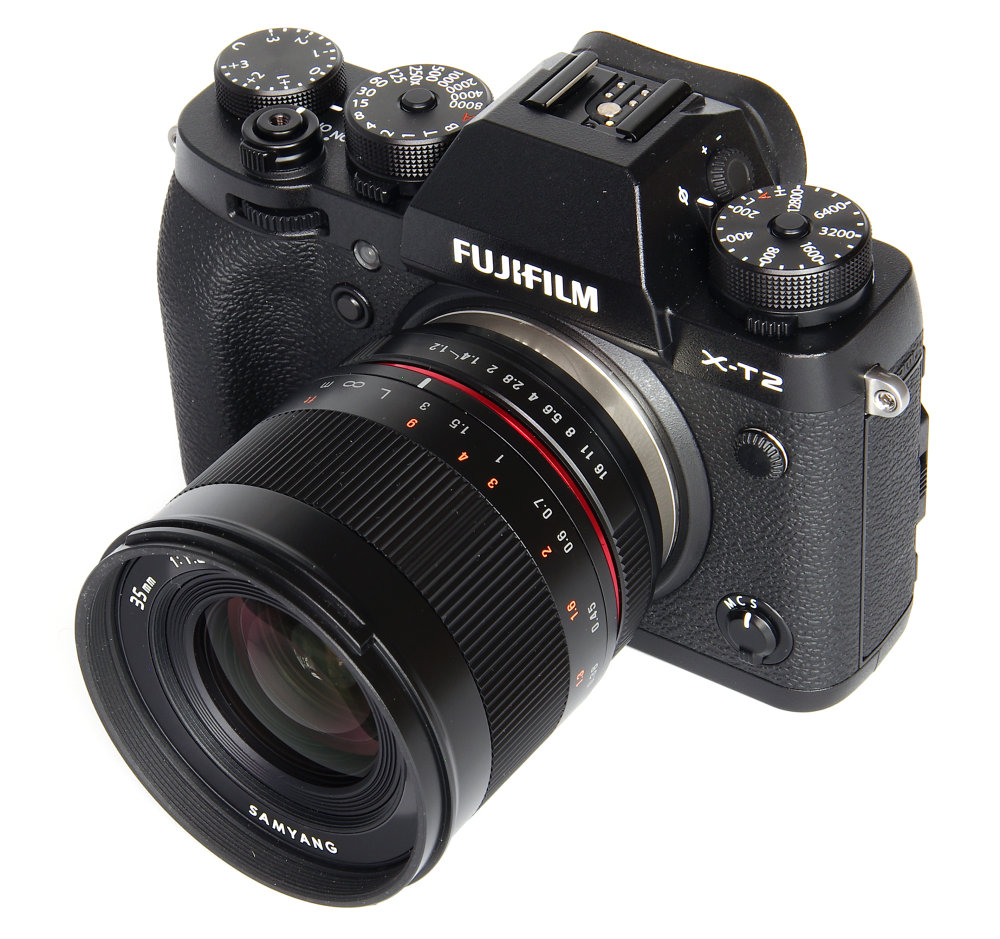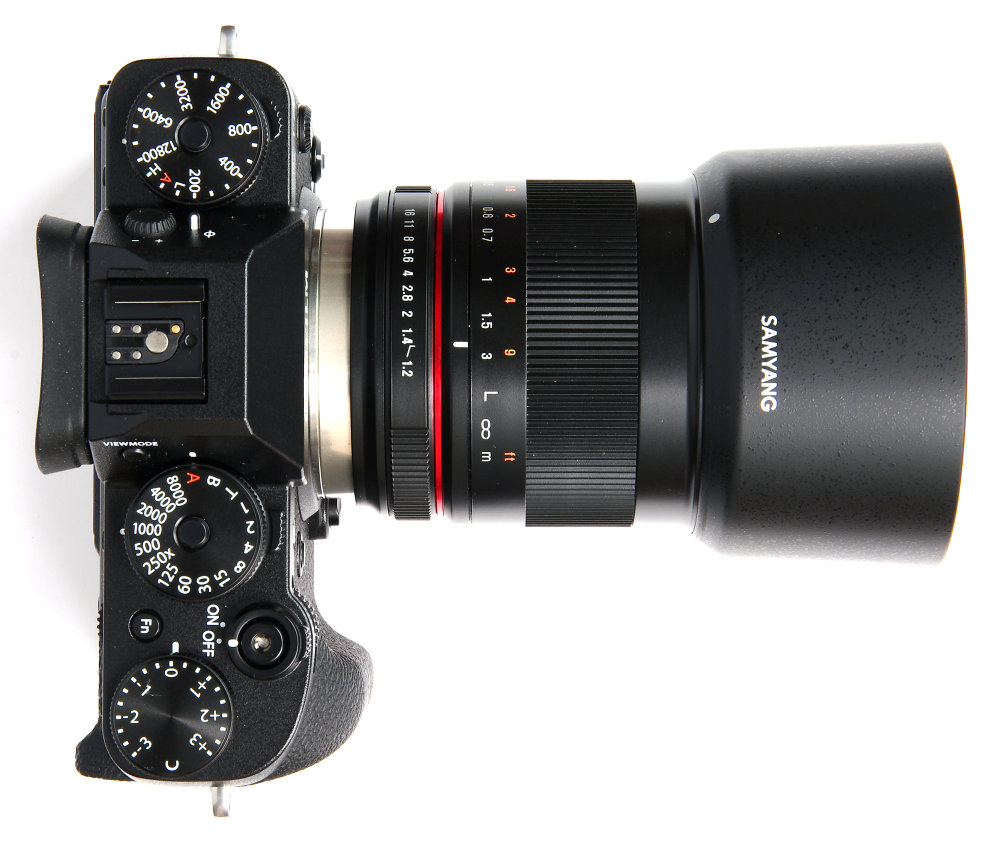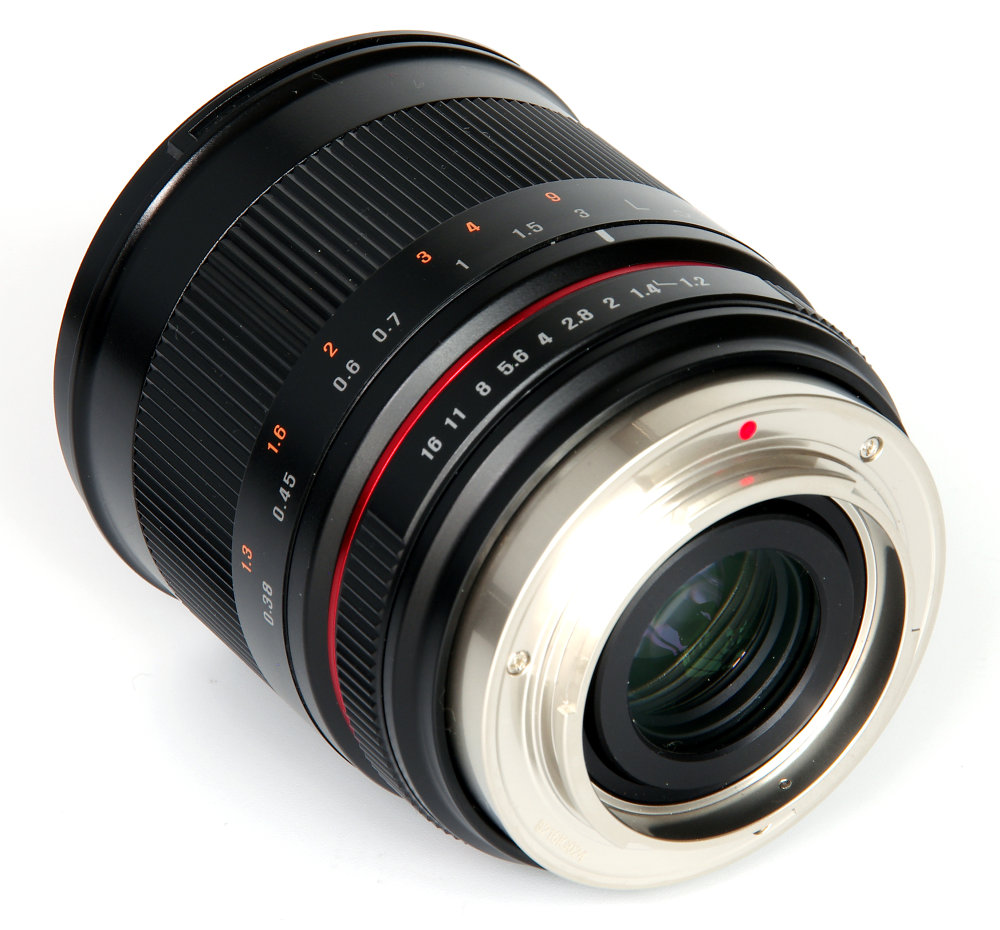Samyang 35mm f/1.2 ED AS UMC CS Review
Samyang 35mm f/1.2 ED AS UMC CS Handling and Features
This compact and light (443g) lens sits firmly on the Fujifilm X-T2 body supplied for the review. It is perfectly balanced with the camera body. There is a generous bayonet fit lens hood that fits smoothly, although the click stop is very light and it is easily turned accidentally. As the hood is round we will not end up with unwanted vignetting should the hood turn from its locked position. The bayonet fit surrounds the 62mm filter thread.
Behind this lies the large, smoothly operating manual focus ring. Distances are clearly marked in feet and metres, but there is no depth of field scale. Closest to the camera body is the aperture ring that turns in the Nikon/Pentax direction. The click stops are easily felt and have just the right amount of resistance.
The mount is well engineered and in the case of the Fujifilm X mount provided is without any electronic contacts. The lens is also available in Canon M (426g), Sony E (420g) and MFT (420g) mounts.
Lens construction comprises 9 elements in 7 groups. There are 2 aspherical and 1 ED (Extra Low Dispersion) elements in the formulation. The 9 bladed diaphragm is intended to provide a more circular aperture, for improved smoothness to the out of focus areas in an image. This is, of course, referred to as the bokeh of a lens. The aperture is always at the value set, so focusing is best achieved at f/1.2 where the image is brightest and the depth of field narrowest. This enables the point of focus to be judged very easily, although this will depend on the viewfinder system of the camera body and any focus assistance that may be available. In the case of the Fujifilm X-T2 focusing the lens was straightforward enough.
There is a certain freedom in taking a camera out with one lens, at least once in a while, and the “standard lens” is an ideal general purpose optic to try this with. The 35mm focal length equates to using a standard 50mm lens on a 35mm-format camera, which is the classic lens. This is a very versatile focal length that offers a field of view and perspective very similar to the natural view of the human eye. It also tends to be a highly corrected design that can take all sorts of optical abuse as close up lenses, filters, extension tubes and other accessories are employed. The closest focus unaided is 0.38m or 1.24 feet. This is slightly closer than traditional standard lenses.
In the case of MFT format, the 35mm-equivalent is 70mm, a short telephoto that should be very useful for portraits and landscapes. Not quite a standard lens for MFT users, but with an added bonus of focusing significantly closer than a traditional 70mm lens would.
The lens is clearly well made and it can be used to deliver some fantastic quality images.
Add your message
Please login here or if you've not registered, you can register here. Registering is safe, quick and free.
photodo Stats
428 MTF tests
74 in-depth photodo reviews
100+ users join each day
Help the lens community by reviewing or rating a lens today via our lens search
Latest Lens Reviews
- Chinon 28mm f/2.8 Vintage Lens Review
- Canon EF 70-200mm f/4L IS II USM Lens Review
- Samyang AF 85mm f/1.4 EF Review
- Sigma 70mm f/2.8 DG Macro Art Review
- Samyang AF 24mm f/2.8 FE Review
- Meike 50mm f/1.7 Review
- Tamron 70-210mm f/4 Di VC USD Review
- Lensbaby Burnside 35mm f/2.8 Review
- Asahi Super Takumar 50mm f/1.4 Review
- Asahi Super-Multi-Coated Takumar 135mm f/3.5 Review



